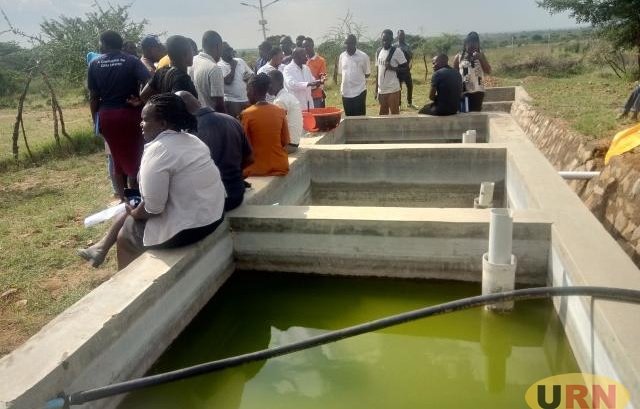
Moroto, Uganda | THE INDEPENDENT | Livestock farmers in the Teso and Karamoja subregions have been urged to embrace modern agricultural techniques—particularly crossbreeding indigenous animals with improved Schwall breeds—to increase resilience and productivity in the face of harsh climatic conditions. The call was made by George Egayu, an animal health and artificial insemination technician at the Nabuin Zonal Agricultural Research and Development Institute (ZARDI), under the National Agricultural Research Organization (NARO). Egayu explained that the two regions fall under Uganda’s semi-arid drylands, and crossbreeding is essential for producing stronger, more productive livestock.
He noted that Uganda’s improved cattle breeds are typically hybrids—crosses between native and exotic breeds—designed to offer what he termed as “hybrid strength.” Meanwhile, Dr. Walter Odongo, Director of Research at Nabuin ZARDI and a PhD holder in Agricultural Economics from Ghent University, Belgium, encouraged farmers in Teso and Karamoja to diversify into tomato farming. He suggested the use of human urine as a natural, low-cost pesticide and fertilizer to enhance tomato production.
According to Dr. Odongo, one of Nabuin ZARDI’s core objectives is to promote dual-purpose breeds and agricultural research that supports both crop and livestock production, alongside areas like apiculture, aquaculture, soil fertility, and water management. Other focal points include agroforestry, animal traction, and socioeconomics. The research mandate covers 18 districts across the two subregions, including: Serere, Soroti, Kaberamaido, Ngora, Kumi, Bukedea, Amuria, Katakwi, Kapelebyong, Napak, Moroto, Nakapiripirit, Nabilatuk, Kotido, Abim, Kaabong, Amudat, and Karenga.
Emmanuel Ikilai, a soil fertility scientist at Nabuin ZARDI, emphasized that vegetable farming—especially tomato cultivation—is feasible in Karamoja. He urged local farmers to prioritize quality in both production and marketing. He recommended applying human urine as fertilizer after storing it for six months to eliminate harmful bacteria and improve its efficacy.
On aquaculture, Gilbert Mutundo, an aquaculture technician at the institute, cautioned farmers against sourcing fingerlings from uncertified hatcheries. He stressed that using unverified fish stocks often results in poor yields and inconsistent fish sizes. Mutundo advised farmers to only procure fingerlings from certified hatcheries to ensure high-quality inputs and access to technical support.
Established in 1963, Nabuin was initially intended to provide agricultural expertise and extension services to Karamoja and neighboring areas. However, during the 1979 political unrest, the center was vandalized and rendered non-functional.
The National Agricultural Research Act of 2005 re-established the institute as Nabuin ZARDI, with a mandate to serve Uganda’s north-eastern dryland agro-ecological zone. Over the past 14 years, the institute has grown into a regional hub for agricultural research and innovation, working with farmers and partners to improve food security, climate resilience, and rural livelihoods.
Research at Nabuin ZARDI spans multiple areas, including livestock and crop production, animal traction, apiculture, aquaculture, soil and water management, agroforestry, and socioeconomics. Cross-cutting themes include climate change adaptation, biodiversity conservation, and nature-based agriculture.
****
URN

